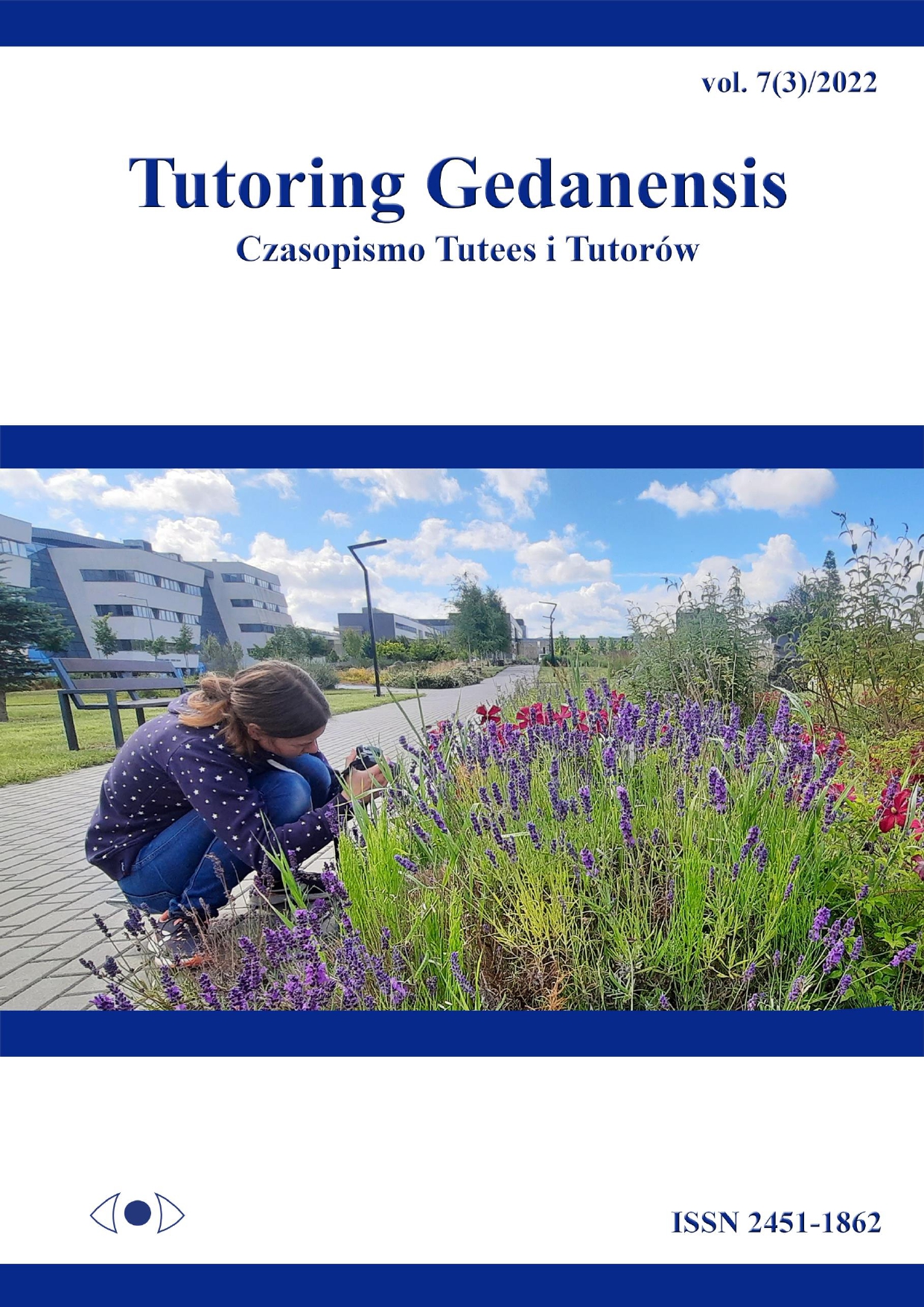Chwytające struktury u roślin pułapkowych
DOI:
https://doi.org/10.26881/tutg.2022.3.02Słowa kluczowe:
Nepenthes, rośliny pułapkowe, rośliny mięsożerne, rośliny owadożerne, dzbaneczniki, DroseraDownloads
Bibliografia
Adamec, L. 1997. Mineral nutrition of carnivorous plants: A review. The Botanical Review, 63(3), 273- 299.
Adams, R.M., Smith, G.W. 1977. An S.E.M. survey of the five carnivorous pitcher plant genera. American Journal of Botany, 64, 265-272.
Baby, S., Johnson, A. J., Zachariah, E. J., Hussain, A. A. 2017. Nepenthes pitchers are CO2-enriched cavities, emit CO2 to attract preys. Scientific Reports, 7(1), 11281.
Bauer, U., Bohn, H.F., Federle, W. 2008. Harmless nectar source or deadly trap: Nepenthes pitchers are activated by rain, condensation and nectar. Proceedings of the Royal Society B Biological Sciences 275, 259-265.
Bauer, U., Federle, W. 2009. The insect-trapping rim of Nepenthes pitchers: surface structure and function. Plant Signaling & Behavior, 4(11), 1019-1023.
Bauer, U., Willmes, C., Federle, W. 2009. Effect of pitcher age on trapping efficiency and natural prey capture in carnivorous Nepenthes rafflesiana plants. Annals of Botany, 103, 1219-1226.
Bazile, V., Le Moguédec, G., Marshall, D.J., Gaume, L. 2015. Fluid physico-chemical properties influence capture and diet in Nepenthes pitcher plants. Annals of Botany, 115, 705-716.
Bohn, H.F., Federle, W. 2004. Insect aquaplanning: Nepenthes pitcher plants capture prey with the peristome, a fully wettable water-lubricated anisotropic surface. Proceedings of the National Academy of Sciences USA, 101, 14138-14143.
Bonhomme, V., Pelloux-Prayer, H., Jousselin, E., Forterre, Y., Labat, J.-J., Gaume, L. 2011. Slippery or sticky? Functional diversity in the trapping strategy of Nepenthes carnivorous plants. New Phytologist, 191, 545-554.
Chin, L., Moran, J. A., Clarke, C. M. 2010. Trap geometry in three giant montane pitcher plant species from Borneo is a function of tree shrew body size. New Phytologist, 186, 461-470.
Clarke, C. 1997. Nepenthes of Borneo. Natural history Publications (Borneo) Sdn. Bhd, Kota Kinabalu, Sabah, Malaysia.
Clarke, C. 2001. Nepenthes of Sumatra and Peninsular Malaysia. Natural History Publications (Borneo), Kota Kinabalu.
Clarke, C. M., Bauer, U., Lee, C. C., Tuen, A. A., Rembold, K., Moran, J. A. 2009. Tree shrew lavatories: a novel nitrogen sequestration strategy in a tropical pitcher plant. Biology Letters, 5(5), 632-635.
Cresswell, J.E. 1998. Morphological correlates of necromass accumulation in the traps of an eastern tropical pitcher plant, Nepenthes ampullaria Jack, and observations on the pitcher infauna and its reconstitution following experimental removal. Oecologia, 113, 383-390.
Di Giusto, B., Bessière, J.-M., Guéroult, M., Lim, L.B.L., Marshall, D.J., Hossaert-McKey, M., Gaume, L. 2010. Flower-scent mimicry masks a deadly trap in the carnivorous plant Nepenthes rafflesiana. Journal of Ecology, 98, 845-856.
Gaume, L., Bazile, V., Huguin, M., Bonhomme, V. 2016. Different pitcher shapes and trapping syndromes explain resource partitioning in Nepenthes species. Ecology and Evolution, 6(5), 1378-1392.
Gaume, L., Di Giusto, B. 2009. Adaptive significance and ontogenetic variability of the waxy zone in Nepenthes rafflesiana. Annals of Botany, 104(7), 1281-1291.
Gaume, L., Forterre, Y. 2007. A viscoelastic deadly trap in Nepenthes pitcher plants. PLoS One, 2: e1185.
Gaume, L., Gorb, S., Rowe, N. 2002. Function of epidermal surfaces in the trapping efficiency of Nepenthes alata pitchers. The New Phytologist, 156(3), 479- 489.
Gorb, S.N. 1998. The design of the fly adhesive pad: distal tenent setae are adapted to the deliveryof an adhesive secretion. Proceedings of the Royal Society of London B, 265, 747-752.
Gorb, S.N. 2001. Attachment devices of insect cuticle. Dordrecht, The Netherlands: Kluwer Academic Publishers.
Grafe, T.U., Schöner, C.R., Kerth, G., Junaidi, A., Schöner, M.G. 2011. A novel resource-service mutualism between bats and pitcher plants. Biology Letters, 7(3), 436-439.
Juniper, B.E., Robins, R.J., Joel, D. 1989. The carnivorous plants. London, UK: Academic Press.
Koo, A.J.K., Howe, G.A. 2009. The wound hormone jasmonate. Phytochemistry, 70, 1571-1580.
Krausko, M., Perutka, Z., Šebela, M., Šamajová, O., Šamaj, J., Novák, O., Pavlovič, A. 2017. The role of electrical and jasmonate signalling in the recognition of captured prey in the carnivorous sundew plant Drosera capensis. The New Phytologist, 213(4), 1818-1835.
Lam, W.N., Tan, H.T.W. 2020. The Pitcher Plants (Nepenthes Species) of Singapore. Lee Kong Chian Natural History Museum, National University of Singapore, Singapore.
Lee, D.W., Richards, J.H. 1991. Heteroblastic development in vines. pp. 205-243 in E. F. Putz and H. A. Mooney, eds. The biology of vines. Cambridge Univ. Press, Cambridge.
Lloyd, F.E. 1942. The carnivorous plants. Waltham, MA, USA: Chronica Botanica Co.
McPherson, S. 2009. Pitcher plants of the old world (Vol. 2). Redfern Natural History Production, Pool, Dorset, U.K.
Moran, J.A., Booth, W.E., Charles, J.K. 1999. Aspects of pitcher morphology and spectral characteristics of six Bornean Nepenthes pitcher plant species: implications for prey capture. Annals of Botany, 83, 521- 528.
Moran, J.A., Clarke, C., Gowen, B.E. 2012. The use of light in prey capture by the tropical pitcher plant Nepenthes aristolochioides. Plant Signalling & Behavior, 7, 957-960.
Mousavi, S.A.R, Chauvin, A., Pascaud, F., Kellenberger, S., Farmer, F.E., 2013. Glutamate receptor-like genes mediate leaf-to-leaf wound signals. Nature, 500, 422-426.
Poppinga, S., Hartmeyer, S. R., Masselter, T., Hartmeyer, I., Speck, T. 2013. Trap diversity and evolution in the family Droseraceae. Plant Signaling & Behavior, 8(7), e24685.
Schultze, W., Schultze, E.D., Pate, J.S., Gillison, A.N. 1997. The nitrogen supply from soils and insects during growth of the pitcher plants Nepenthes mirabilis, Cephalotus follicularis and Darlingtonia californica. Oecologia, 112, 464-471.
Wasternack, C., Hause, B. 2013. Jasmonates: biosynthesis, perception, signal transduction and action in plant stress response, growth and development. An update to the 2007 review in Annals of Botany. Annals of Botany, 111, 1024-1058.
Wigglesworth, V.B. 1987. How does a fly cling to the under surface of a glass sheet. Journal of Experimental Biology, 129, 363-367.
Źródła internetowe
Plants of the World Online, https://powo.science.kew.org/taxon/urn:lsid:ipni.org:names:32701 4-2 (dostęp z dn. 19.09.2022).

 Uniwersyteckie Czasopisma Naukowe
Uniwersyteckie Czasopisma Naukowe



